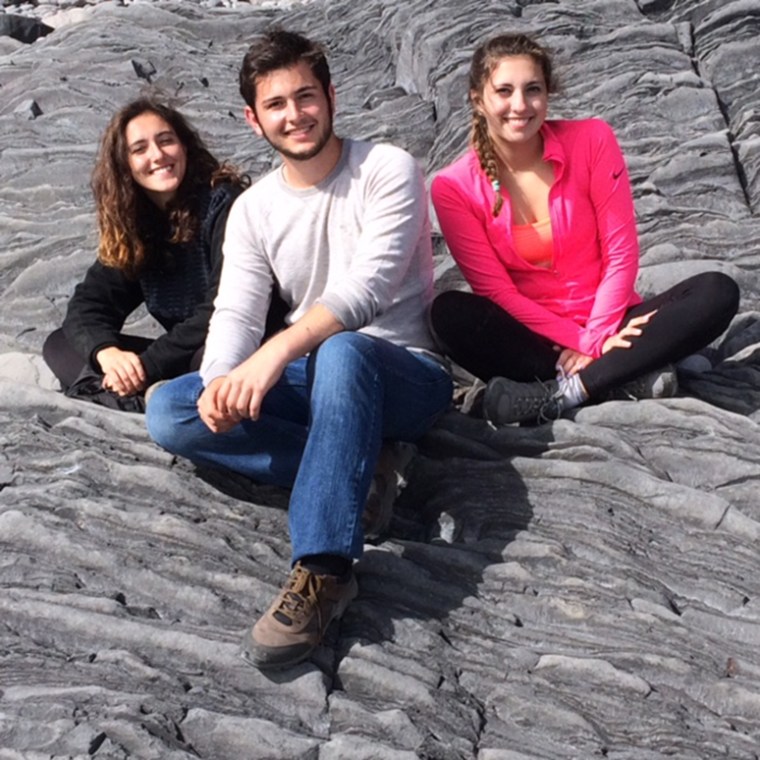Olivia Paregol was a happy, friendly 18-year-old who loved dorm life at the University of Maryland.
“She was the typical freshman girl, looking to meet people and have the college experience,” her father, Ian Paregol, said.
Olivia died in November, killed by a virus that normally causes symptoms little worse than the common cold: adenovirus 7. It’s the same strain that killed 11 children and made 36 sick in an outbreak at a nursing home in New Jersey.
Some experts believe the strain is spreading more frequently across the United States. Adenovirus 7 causes more severe symptoms — such as fever, sore throat, and diarrhea — than other strains of adenoviruses and while there is a vaccine to prevent it, it’s currently only available for military recruits.
It may be time to change that, especially given the recent deaths, several experts say.
“If that child at the University of Maryland was yours and you knew she had died of a vaccine-preventable disease, what would you do?” asked Adriana Kajon, who studies adenovirus at the Lovelace Respiratory Research Institute, New Mexico.
Paregol knows. He and his wife are asking questions about why the University of Maryland did not do more to protect his daughter and to improve hygiene at its overcrowded dormitories.
“Just about every kid was sick in that dorm,” Paregol said. The dorm Olivia lived in, Elkton Hall, was so overcrowded, the university had converted some of the dorm lounges into living quarters.

“They called them ‘lounge girls’,” Paregol said. “I remember her saying, ‘I am going to go up and see the lounge girls’.”
The dorm also had problems with mold, which led to many complaints and in September the university said it had cleaned some areas and allowed some students to relocate. The Centers for Disease Control and Prevention says mold doesn’t affect transmission of respiratory viruses, but Paregol said the mold problem should have been a red flag to university officials.
“There really does seem to be a pattern of indifference to the health of the students at the University of Maryland,” he said. “Having more students in the dorm than the dorm could even handle, let alone the mold … they just waited so long to react.”
Before the students left for the winter break, the university said 35 students had tested positive for adenovirus and 10 have been typed as adenovirus 7 by the CDC. “To help prevent the spread of cold, flu and other viruses on campus, Residential Facilities will do a deep cleaning of the residence halls from Jan. 7–18, including disinfecting frequently touched surfaces in students’ rooms,” the university said.
To Kajon, the case illustrates that college students are just as vulnerable as military recruits to a virus that is at best disruptive and, at its worst, deadly.
“Without a doubt, the problem is out there and there are people dying of these vaccine-preventable infections,” she said. “This is a vaccine-preventable disease.”
Two vaccines exist to protect against adenovirus 4 and adenovirus 7. They are — unusually for vaccines —available as pills; and a single pill provides 99 percent protection from each of the viruses.
“It has been puzzling to me why this vaccine isn’t marketed outside the military because there are many groups who are similar to military recruits. That includes college students and nursing homes,” said Dr. Amesh Adalja of the Johns Hopkins University Center for Health Security.
The fatal outbreaks at the University of Maryland and at a pediatric nursing facility in New Jersey, where 11 children have died, suggest there might be wider markets for the vaccine, he said.
“Without a doubt, the problem is out there and there are people dying of these vaccine-preventable infections,”
So why is the vaccine only available for the military?
“These particular adenovirus types are a military problem,” said Dr. Lawrence Lightner, project manager at the U.S. Army Medical Materiel Development Activity. The vaccine was originally developed by the military in the 1960s and is given to new recruits to stop the spread of the viruses in barracks.
“Up to this point, it has not been a problem (in civilian populations),” Lightner told NBC News. “There have been numerous studies, numerous epidemiological studies. No one’s really been able to pin down why it’s only been a military problem.”
Kajon said recent studies that she and others have done show this is no longer the case. “The virus is out there in the community. No doubt about it,” Kajon said.
Several reports back her up. Just last month, the CDC’s Holly Biggs and colleagues reported that 15 percent of students at a Pennsylvania college who showed up at clinics with influenza-like illnesses between 2016 and 2017 had adenovirus — mostly strains 3, 4 and 7. Daryl Lamson of the New York State Department of Health and colleagues reported in July of last year that 8 percent of people who were tested for flu-like illness at a college there had adenovirus.
College campuses are very much like a military training base, they noted. “Without active surveillance for (adenovirus) and other respiratory pathogens, outbreaks of acute respiratory illness may go undetected, leading to rapid spread and, subsequently, to difficult containment,” they wrote.
Between 2013 and 2104, Magdalena Kendall Scott of the Oregon Public Health Division and colleagues reported they found 198 adenovirus cases in two large Oregon hospital systems. “Adenovirus-7 might be reemerging in the United States and might be associated with increased numbers of severe respiratory infections,” they wrote in their 2016 report.
“These are all individuals that could have been vaccinated had there been a vaccine for the civilian population,” Kajon said. “The efficacy of this vaccine is excellent.”
The pharmaceutical company Teva now makes the vaccine under contract for the military. It has only been tested in a military population and to be licensed for any other use, Teva or another maker would have to test the vaccine among civilians, show it is safe and then apply for Food and Drug Administration approval to sell it more widely.
That could be a problem, because the vaccine is made using “live” virus, Lightner said. A crippled version of the virus is encapsulated in the pill and released once it reaches the intestines, to stimulate the immune system from the gut. Because it’s live, the virus can show up in fecal matter and might spread. Although it has been weakened, it could conceivably make vulnerable people ill, including the sick or elderly. Most vaccines are made using viruses that have either been killed or are made using a few bits of genetic material and cannot cause an infection.
A live vaccine works fine for immunizing military recruits, because they live in a controlled situation, Lightner said. “These people aren’t getting the vaccine and then going home and seeing their families,” he said. “They’re going straight into training and they are training for a long enough period of time that they’re not in danger of spreading virus any more.”
A solution may be to vaccinate nursing home staff, said Adalja. That way they could better protect immunosuppressed people, such as the patients they care for.
And Paregol would like to see a vaccine made available to college students and staff. His daughter was taking medication that made her more vulnerable to infections and he would have appreciated any measures that could have protected her and others from the virus.
However, Lightner said there is little demand for an adenovirus vaccine. “There just wouldn’t be a market for it at this point,” he said.
Someone will have to make a case for the vaccine, and companies will need financial incentives to step up production, Kajon agreed. “Unfortunately, we live in a society that is market driven and companies don’t invest unless they can sell their product,” she said.
That may change. Kajon said labs like hers, the New York State Department of Health and the CDC are doing more surveillance to see just which adenoviruses are circulating and how much illness they are causing.
“There are several new ways to make vaccines safer,” she said. “I anticipate that vaccinologists will be offering some options to go about meeting the needs of the market,” she added.
“A life is a life is a life.”




